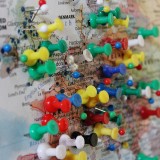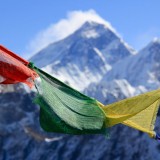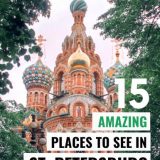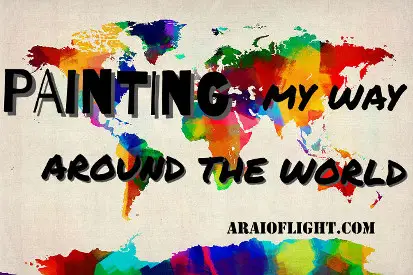100+ Ways to Say LIGHT in Different Languages of the World
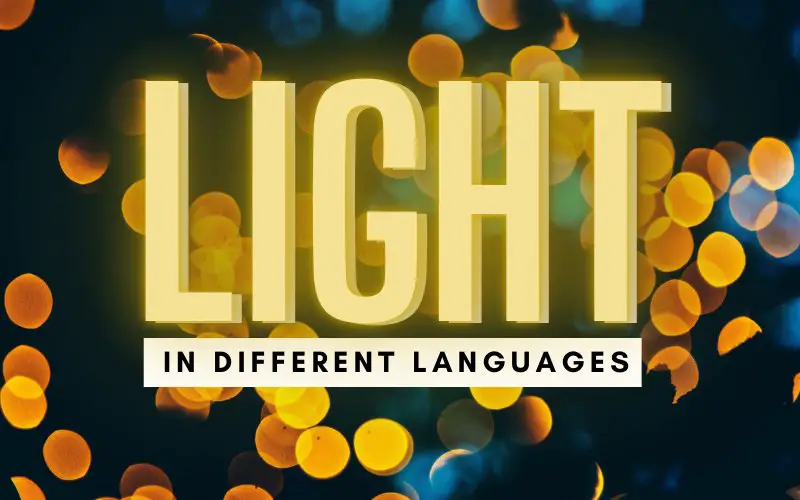
LIGHT. LUZ. LUCE. 光 نور. The words may be different, but however you say it, the translation is the same. Light is defined as a form of electromagnetic radiation, a form of energy that moves as waves. It makes up a small part of the electromagnetic spectrum with a wavelength that can be seen by the human eye. It’s time to light up your world! Here is your ultimate guide: 100+ ways on how to say LIGHT in different languages of the world.
Light is our source of illumination. This sensation aroused by stimulation of the visual receptors can take the form of both natural and artificial light. It is a natural agent that stimulates sight and makes things visible.
Like light itself, the word can take on many forms with different meanings. It can be used as a noun, a verb, or an adjective and the way the word is used in a sentence will let you know what form is being used.
Keep shining. The world needs your light
>> For more inspiration check out these:
quotes about light
In the 21st century we are more interconnected than ever before, and all through time, the one thing that remains is our need and want to connect.
Continue reading to discover the complete list of light in all languages.
Click here to also learn how to say:
HELLO and GOODBYE in all languages around the world.
A big advantage of traveling the world is seeing different people, their cultures, their traditions, and the way they speak. Learning a handful of words from other languages allows us to connect more personally with someone and realise that we have more similarities than differences. We can actually learn quite a bit about people from different parts of the world just by their language and the way they express themselves.
You’ve come to the right place. I have just what you’re looking for. So whether you find yourself in Africa, Europe, Asia, or America, I’ve got you covered, fellow explorer. Be sure to copy and paste, bookmark, and save this post for future use and ease of reference.
Let’s get into it…. ↓↓
All stars are born in the dark and all darkness dies in the light
Here’s how to say:
My love and I love you in every languages of the world.
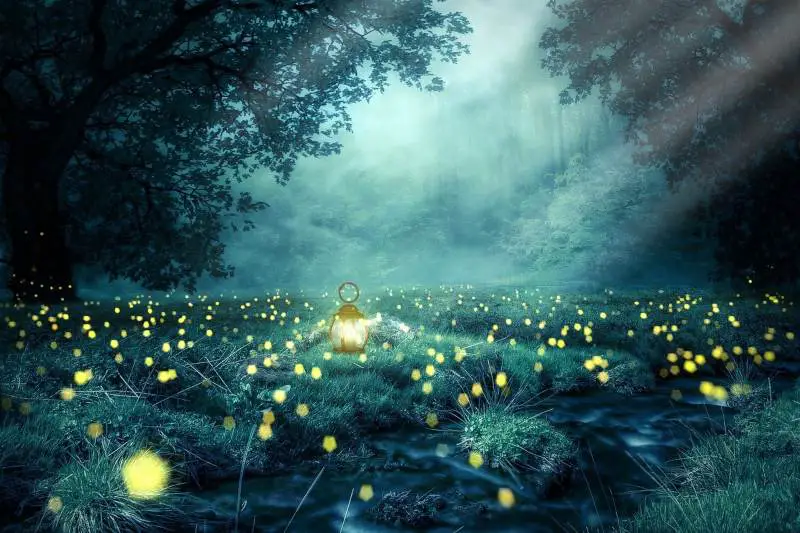
Other Creative Ways to Say Light
In addition to saying the word light in other languages, here are a couple other ways you could express the light:
Eleven other words for LIGHT in English:
- bright
- luminous
- shiny
- sunny
- illumination
- blaze
- glare
- glow
- gleam
- radiance
- lustre
Want to learn how to say THANK YOU and CHEERS too?
Read this guide on thank you in all languages and
cheers in different languages.
LIGHT IN DIFFERENT LANGUAGES
Here’s your guide on more than 100 ways to say LIGHT in different languages of the world.
With pronunciation. In brackets you will find how to pronounce the word as it can often be difficult to know how to vocalise the word just by reading or looking at the direct translation.
Are you ready to take a beautiful trip around the world, filled with light in a different language?
I have included the phrase for light in every language I could think of. If you don’t spot your language, let me know (in the comments) and I will be happy to add it to this list.
Scroll to the bottom for a little bonus! ↓↓
Nothing can dim the light that shines from within
Want to learn how to say GOOD MORNING and GOOD NIGHT too?
Read this guide to say good morning and good night is other languages.

Speaking of light, describe your great luminescense with these:
rising sun quotes and setting sun quotes
How do I say LIGHT in another language? Different languages for light in the world here ↓↓
Let’s get into it…
Here’s how you say “light” in:
Afrikaans
- lig
— is the Afrikaans word for light
Afrikaans is a West Germanic language of Southern Africa mostly derived from Dutch. It developed as Dutch settlers and indigenous African mixed languages beginning in the 17th century. Today, an estimated 15 to 23 million people call Afrikaans their mother tongue. It is mainly spoken in South Africa and Namibia and can also be heard in parts of Botswana and Zimbabwe.
Albanian
- dritë
— is the Albanian word for light - fener
— can also be used
Albanian is an Indo-European language, spoken mainly in Albania and Kosovo, though it is also spoken in other areas of the Balkans. With about 7.5 million speakers, it comprises an independent branch within the Indo-European languages and is not closely related to any other language in the European Union.
Amharic
- ብርሃን birihani
— is the Amharic word for light
Amharic is a Semitic language and the official language of Ethiopia. It can also be heard in Egypt and Eritrea, as well as in Israel, Sweden, Canada, and the United States.
Arabic
- نور nur
— light in Arabic - ﺿَﻮﺀ dhaw’
- ضياء thia’
- خفيفة khafifa
— can also be used for light in Arabic
Arabic (العربية) is a Semitic language spoken by over 420 million people as their first language in areas including North African countries, the Arabian Peninsula, and other parts of the Middle East. Many more people can also understand it as a second language. Modern Standard Arabic is the liturgical language for 1.6 billion Muslims and is the official written form of the language with the Arabic alphabet, which is written from right to left.
Armenian
- լույս luys
— light in Armenian
Armenian is an Indo-European language spoken in the Republic of Armenia, as well as in large communities of Armenian diaspora by around 6.7 million people.
Azerbaijani
- işıq
— means light in Azerbaijani
Azerbaijani or Azeri is the primary and official language of Azerbaijan by its 8.8 million native speakers. It is also widely spoken in Northern Iran and to a small extent in southern Dagestan, the Kvemo Kartli region of Georgia, eastern Turkey, in Shia cities of Iraq, like Karbala and Kirkuk. The language is a Turkic language and is highly intelligible with modern-day Turkish.
Basque
- argia
— is the Basque word that translates to light
Basque (euskara) is a language spoken in the Basque Country (Gipuzkoa, Araba, Bizkaia) and Navarra (in Spain) as well as in the French Basque Country (Labourd, Soule and Basse-Navarre). Linguistically, Basque is a language isolate and is unrelated to the other languages of Europe.
Bavarian / Austrian German
- licht
Bavarian is a regional dialect of German spoken in the German state of Bavaria, western Austria, and Northeastern Italy by over 14 million people. It uses German grammar, but takes several root words from Latin.
Belarusian
- святло sviatlo
— is the Belarusian word for light
Belarusian is the official language of Belarus. This East Slavic language is also spoken in Russia, Ukraine, and Poland.
Bengali
- The Bengali noun for light is আলো Ālō
Bengali বাংলা is the only official language of Bangladesh, one of the 22 official languages of India, and the sixth most spoken language in the world. It is spoken as a first language by the majority of the population in Bangladesh, as well as people in the Indian state of West Bengal.
Bhojpuri
- अंजोरिया
Bhojpuri is an Indo-Aryan language, considered to be one of the most rapidly growing languages in the world, spoken in northern-eastern India and the Terai region of Nepal.
Bodo
- जोंखांनाय Jonkhamnay
Bodo बर’/बड़ is the Sino-Tibetan language spoken primarily by the Bodo people of Northeast India, Nepal and Bengal. It is official language of the Bodoland Autonomous region and co-official language of the state of Assam in India.
Bosnian
- svjetlo
— is the Bosnian word for light
Bosnian, a south Slavic language of the Indo-European family, is the official language of Bosnia and is essentially the same language as Croatian and Serbian. All three languages used to be known as Serbo-Croatian before the break-up of Yugoslavia.
Brazilian Portuguese
- leve
— the word for light in Brazilian Portuguese
Brazilian Portuguese (Português do Brasil) is the variety of Portuguese dialect spoken in Brazil. It is spoken by virtually all of the 200 million inhabitants of Brazil and spoken widely across the Brazilian diaspora. European Portuguese differs from the Brazilian variety in pronunciation, as well as in some vocabulary.
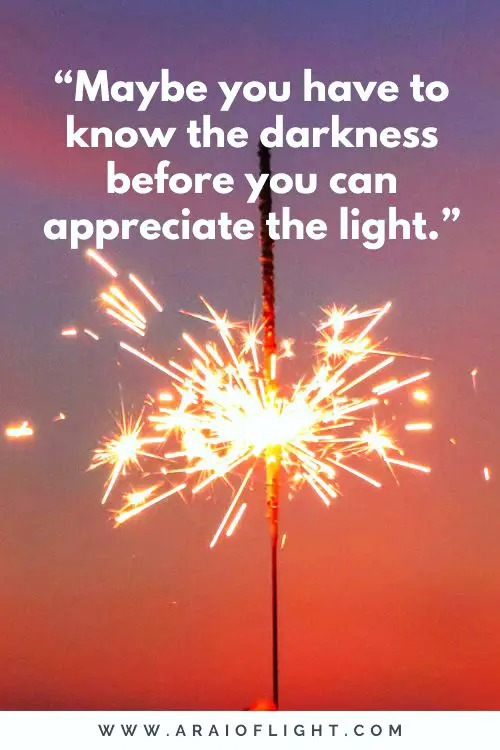
Breton
- gouloù
— is the word for light in Breton
Breton is a Southwestern Brittonic language of the Celtic language spoken in Brittany in the northwest of France.
Bulgarian
- светлина
— pronounced (svetlina) is the Bulgarian word for light
Bulgarian is a South Slavic language spoken in Southeastern Europe, primarily in Bulgaria. It is the country’s only official language and Bulgarian is written with Cyrillic.
Burmese
- Light in Burmese is အလင်း aalainn
Burmese is a Sino-Tibetan language spoken in Myanmar where it is an official language and the language of the Bamar people, the country’s principal ethnic group.
Cambodian Khmer
- ពន្លឺ (ponlu)
— means light in Khmer
Khmer is the language of the Khmer people and the official language of Cambodia. With over 16 million speakers, it is the second most widely spoken Austroasiatic language.
Catalan
- llum
— is the word for light in Catalan, pronounced (ioom)
Catalan is a Western Romance language derived from Vulgar Latin and named after the medieval Principality of Catalonia, in northeastern of modern Spain. It is the only official language of Andorra, and a co-official language of the Spanish autonomous communities of Catalonia, the Balearic Spanish Islands, and Valencia.
Cebuano
- kahayag
Cebuano, also known as Bisaya or Binisaya, is an Austronesian language spoken in the southern Philippines region in Central Visayas, western parts of Eastern Visayas and the majority of Mindanao.
Chamorro
- inina
Chamorro is an Austronesian language, the native and spoken language of the Chamorro people, who are the indigenous people of the Mariana Islands.
Chichewa
- kuwala
Chichewa, also known as Nyanja, is a Bantu language spoken in much of Southern, Southeast and East Africa. It is the national language of Malawi and is also spoken in Zambia, Mozambique, and Zimbabwe.
Chinese Cantonese
How to say light in Chinese Cantonese:
- 燈 (dang1 | deng1)
— the Cantonese word for light - daam6 ( 淡 )
- heng1 ( 轻 )
Cantonese is a variety of Chinese originating from the city of Guangzhou and its surrounding area in Southeastern China. Belonging to the Sino-Tibetan family of languages, it is the traditional prestige variety of the Yue Chinese dialect group, which has about 68 million native speakers.
Chinese Mandarin
How do you say light in Chinese Mandarin:
- 光 guāng
- dàn ( 淡 )
- qīng ( 轻 )
— the Chinese Mandarin words for light
Mandarin Chinese is the official language of Mainland China and Taiwan, and is one of the official languages of Singapore. Mandarin is often placed first in lists of languages by number of native speakers with almost a billion speakers.
Corsican
- Light in Corsican: luce
Corsican is a Romance language from the Italo-Dalmatian family that is spoken predominantly on the Mediterranean island of Corsica. Corsican is closely related to Tuscan and to the Florentine-based Italian.
Croatian
- svjetlo
— is the Croatian word for light
Croatian or Hrvatski is a South Slavic language spoken mainly in Croatia, Bosnia and Herzegovina, some parts of Serbia, and the neighbouring countries by about 5.5 million people.
Czech
- světlo
— my light in Czech - světlý
Czech is a Western Slavic language which is mutually intelligible with Slovak. It is mainly spoken in the Czech Republic with over 10,5 million speakers.
Danish
- lys
— is the word for light in Danish
Danish is a Scandinavian language and the only official language of the Kingdom of Denmark. Closely related to Swedish and Norwegian, it is spoken in Denmark and in some parts of Greenland and northern Germany.
Dogri
- चानन
Dogri is a Northern Indo-Aryan language spoken by around five million people in India, mainly in the Jammu region of Jammu and Kashmir.
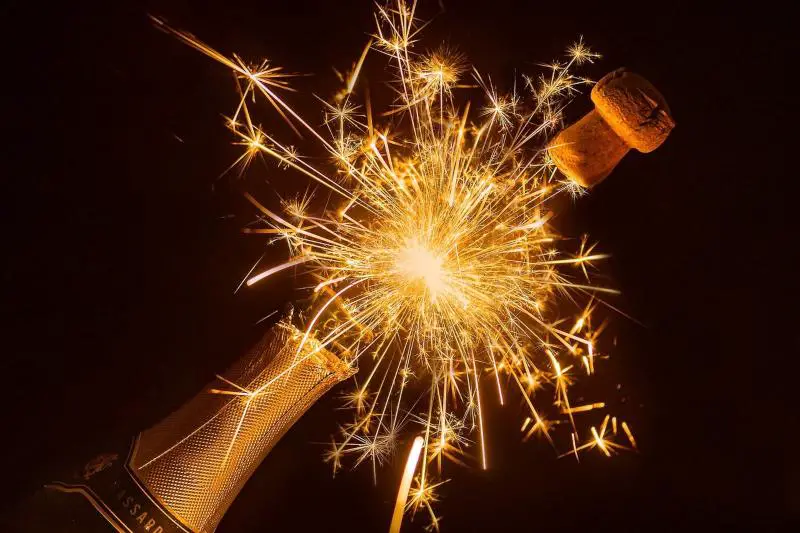
Dutch
- licht
— the Dutch word meaning light
Dutch is a West Germanic language spoken by about 27 million people world-wide mostly in the Netherlands and northern Belgium.
Dzongkha
- ཉི
Dzonkha or Bhutanese is the sole official and national language of the Kingdom of Bhutan. This Sino-Tibetan language is spoken by over half a million people in Bhutan and is written with the Tibetan alphabet.
English
- Light
English is a West Germanic language that was first spoken in Anglo-Saxon England in the early Middle Ages. It is spoken in many countries around the world with over 375 million native speakers. English is the second most spoken language, and the most international language in the world.
Estonian
- valgus
— is the Estonian word for light
Estonian is a Finno-Ugric language spoken as the official language in Estonia. It is closely related to Finnish.
Faroese
- ljós or ljósur
— are the words for light in Faroese
Faroese is a North Germanic language spoken as a first language by Faroe Islanders, residing on the Faroe Islands and in other areas, mainly Denmark.
Farsi / Persian
- سبک (sebek)
— the Persian word meaning light
Persian is an ancient language belonging to the Iranian branch of the Indo-Iranian subdivision of the Indo-European languages. It is a pluricentric language predominantly spoken and used officially within Iran, Afghanistan, and Tajikistan.
Fijian
- rarama
— this is the Fijian word for light
Fijian is an Austronesian language of the Malayo-Polynesian family. It is an official language of Fiji spoken by some 350,000–450,000 ethnic Fijians as a native language.
Finnish
- valoa
— is the Finnish word for light
Finnish is a Finno-Ugric language spoken only in Finland as the official language and by ethnic Finns elsewhere in Scandinavia.
Flemish
- licht
— is the Flemish word for light
Flemish is a Low Franconian dialect cluster of the Dutch language, native to the historical region of Flanders in northern Belgium. It is sometimes referred to as Flemish Dutch, Belgian Dutch, or Southern Dutch spoken by over 6 million people.
French
- lumiere
— is the French word for light
it’s pronounced like (LOO-Mee-air)
French is a Romance language of the Indo-European family spoken by over 354 million people in France and around the world. It is the third most spoken language in Europe, the official language of 29 countries, spoken in parts of Africa, North America, and South America. Take your special one to the City of Light and stay at one of these amazing hotels with Eiffel Tower views in Paris.
Frisian
- ljocht
The Frisian languages are a closely related group of Germanic languages, spoken by about 500,000 Frisian people, who live on the southern fringes of the North Sea in the Netherlands and Germany.
Georgian
- მსუბუქი msubuki
Georgian is the official language of Georgia and the country’s most widely spoken language with over 4.1 million people.
German
- licht
— light in German - hell
— can also be used
German Deutsch is the official language of both Germany and Austria and one of the three official languages of Switzerland. German belongs to the West Germanic group of the Indo-European language family. One of the major languages of the world, German is a native language to almost 100 million people worldwide and the most widely spoken native language in the European Union.
Greek
Here is how to say light in Greek:
- Φως” (fos)
— this is pronounced as (phos)
Greek (ελληνικά) belongs to the Hellenic branch of the Indo-European language family, mainly spoken in Greece, the islands of Greece, and Cyprus an an official language. It has the longest documented history of any living Indo-European language, spanning more than 3000 years of written records. There are about 13.1 million speakers of Greek worldwide and it is recognised as a minority language in Albania, Armenia, Hungary, Italy, Romania, Turkey and Ukraine.
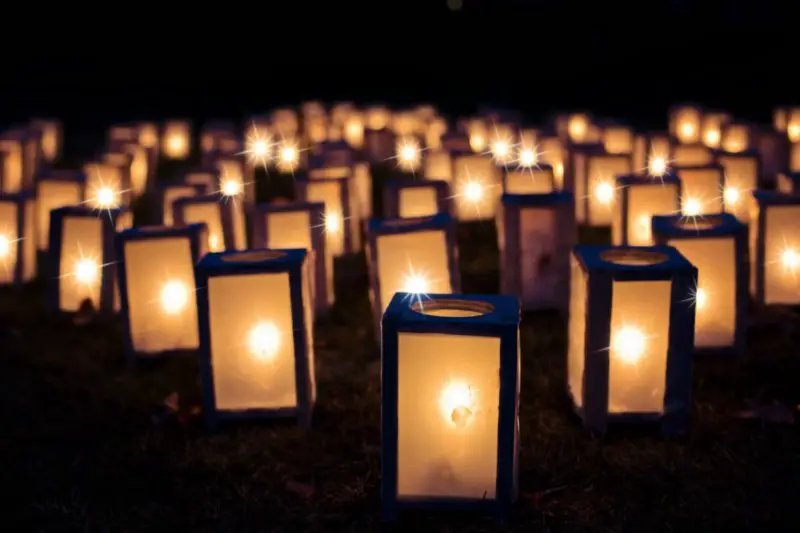
Gujarati
- પ્રકાશ Prakāśa
— is the Gujarati word for light
Gujarati is an Indo-Aryan language native to the Indian state of Gujarat and spoken predominantly by the Gujarati people. Gujarati is part of the greater Indo-European language family.
Haitian Creole
Say light in Creole:
- limyè
Haitian Creole (kreyòl ayisyen)) is a French-based creole language spoken by 10–12 million people worldwide and the only language of most Haitians. Along with French it is one of the official languages of Haiti.
Hausa
- haske
Hausa language, the most important indigenous bridge language in West and Central Africa, spoken as a first or second language by about 40–50 million people. It belongs to the Western branch of the Chadic language family within the Afro-Asiatic language phylum. It is spoken mainly in northern Nigeria and Niger, and also in Benin, Burkina Faso, Cameroon, the Central African Republic (CAR), Chad, Congo, Eritrea, Germany, Ghana, Sudan and Togo.
Hawaiian
How to say light in Hawaiian:
- māmā
- kukui
The Hawaiian language is a Polynesian language that takes its name from Hawaiʻi, the largest island in the tropical North Pacific archipelago where it developed. Hawaiian, along with English, is an official language of the State of Hawaii.
Hebrew
- אוֹר (or)
— is the Hebrew word for light
Hebrew is a Northwest Semitic language spoken by over nine million people worldwide. Historically, it is regarded as the language of the Israelites and their ancestors. It is written using its own script from right to left.
Hindi
To say light is Hindi, use:
- prakāśa (प्रकाश)
- ujālā (उजाला)
- raōśanī (रौशनी)
- ālōka (आलोक)
Hindi (हिन्दी) is an Indo-European language spoken in India, Nepal, and throughout the Indian diaspora. Hindi is descended from Sanskrit, sometimes called “the mother of all languages.” While there are 22 official languages and over 1,000 dialects of India, Hindi and English take precedence in government affairs. It is a link-language for over half of India’s population.
Hmong
- teeb
Hmong is a Hmong-Mien language spoken by about 2.6 million people in China, Vietnam, Laos, Thailand, USA, and French Guiana.
Hopi
- Taawa
Hopi is a Uto-Aztecan language spoken by the Hopi people in northeastern Arizona, USA.
Hungarian
- fény
— this is the word for light in Hungarian
Hungarian is a Uralic language of the Ugric branch spoken in Hungary and parts of several neighbouring countries. It is the official language of Hungary and one of the 24 official languages of the European Union.
Icelandic
- ljós
— is the Icelandic word for light
Icelandic (íslenska) is a North Germanic language spoken in Iceland as its official language. It’s most closely related to Faroese and Western Norwegian and has around 314,000 speakers. The language is more conservative than most other Western European languages.
Igbo
- ìhè
- ọkụ
Igbo is the principal native language of the Igbo people of southeastern Nigeria with around 45 million speakers and over 20 dialects.
Indonesian Bahasa
- lampu
— the Indonesian noun for light
Indonesian (bahasa Indonesia) is the official language of Indonesia.With over 230 million speakers, it is one of the most widely spoken languages in the world. It is a group of varieties of Malay, an Austronesian language that has been used as the common language in the multilingual Indonesian archipelago for centuries. Indonesia uses the Latin alphabet system and Arabic numerals.
Inuktitut
- uqittuq
Inuktitut is an Eskimo-Aleut language spoken in Arctic territories and the topmost span of North America including Alaska and Northern Canada.
Irish
- éadrom
— this is the all-purpose word for light in Irish
Irish (Gaeilge) is one of the three Goidelic languages, along with Scottish Gaelic and Manx. This Goidelic branch together with the Brythonic branch (Welsh, Cornish and Breton) form the Celtic language family.
Italian
How to say light in Italian:
- luce
— is the Italian noun for light, and it’s pronounced as (LUW-CHeh)
Italian (Italiano) is a Romance language of the Indo-European language family spoken by over 90 million people, the vast majority of which are in Italy, Sicily, and Sardinia. It is the official language of Italy, San Marino, and the Vatican City.
Japanese
- 光 Hikari
— this is the word for light in Japanese, meaning shine or gleam. - 天明 Tenmei
— used for light in terms of daylight or sunrise. - 灯/明り Akari or 朗らか Hogaraka
— can also be used
Japanese (日本語 Nihongo) is an East Asian language of the Japonic language family. It is spoken by about 125 million people, mostly in Japan, where it is the official and national language.

Jamaican
- lite
Jamaican Patois, often also referred to as Jamaican Creole, is an English-based creole language with West African influences spoken mainly in Jamaica. Belonging to the English Creole language family, it is spoken by the the majority of Jamaicans with over 3 million native speakers.
Javanese
- cahya
— is the word for light in Javanese
Javanese is the language of the Javanese people of the island of Java, in Indonesia that is the native language of more than 98 million people.
Kannada
- ಬೆಳಕು Beḷaku
— is the Kannada word for light
Kannada, spoken by nearly 45 million native speakers, is a Dravidian language of the people of Karnataka in southwestern India, and by significant linguistic minorities in the states of Maharashtra, Andhra Pradesh, Tamil Nadu, Telangana, Kerala, and abroad.
Kazakh
- жарық jarıq
Kazakh is a Turkic language of the Kipchak branch spoken in Central Asia and the official language of Kazakhstan. The language comprises 21 million native speakers including regions of Bayan-Ulgii in Mongolia and the Dzungarian region of Xinjiang, China.
Korean
Light in Korean:
- 빛 (bich)
Korean, an East Asian language, is the official language of South Korea (Republic of Korea) and North Korea (Democratic People’s Republic of Korea) spoken by more than 75 million people.
Kurdish
- sivik
Kurdish is spoken by about 30 million Kurds in western Asia including parts of Kurdistan, Iraq, Turkey, Iran, and Syria. It is one of the Indo-Iranian languages, ranks as the third largest Iranian language, after Persian and Pashto.
Kyrgyz
- жарык jarıq
Kyrgyz is a member of the Kipchak branch of the Turkic language family spoken by over 4 million speakers mainly in Kyrgyzstan, and also in China, Tajikistan, Afghanistan and Turkey.
Lao
- ແສງສະຫວ່າງ aesngsavang
Lao is the main language of Laos. It is a Kra–Dai language serving as a common language among all citizens of Laos, who speak approximately 90 other languages, many of which are unrelated to Lao. Modern Lao is heavily influenced by the Thai language and comprises over 30 million native speakers.
Latin
- lux
— is the Latin words for light
Latin was the dominant language of the Roman Empire from 6th century BC to 600 AD. When the Roman Empire collapsed, Latin evolved into the various languages that we know today. Italian, French, Portuguese, Spanish and Romanian all consider Latin as their parent tongue. Latin is a classical language belonging to the Italic branch of the Indo-European languages.
Latvian
- gaisma
— translates to light in Latvian
Latvian (latviešu valoda) is an Indo-European Eastern Baltic language spoken in the Baltic region. It is the official language of Latvia and one of the official languages of the European Union.
Lebanese
- خفيفة khafifa
— is the Lebanese word for light
Lebanese is a variety of North Levantine Arabic, indigenous to and spoken primarily in Lebanon. With significant linguistic influences borrowed from other Middle Eastern and European languages it is spoken by over 5,7 million native speakers.
Lingala
- bambola
Lingala is a Bantu language spoken throughout the northwestern part of the Democratic Republic of the Congo and a large part of the Republic of the Congo by over 70 million people.
Lithuanian
- šviesa
— is the word for light in Lithuanian
Lithuanian (lietuvių kalba) is an Eastern Baltic language spoken in the Baltic region as the official language of Lithuania. It is also one of the official languages of the European Union spoken by just under 3 million native speakers. The language is one of the oldest in the world.
Luxembourgish
- liicht
Luxembourgish is a West Germanic language that is spoken mainly in Luxembourg. About 390,000 people speak Luxembourgish worldwide.
Luganda
- omusana
Luganda, a Bantu language, is an official language of Uganda along with English and Swahili. It is spoken primarily in Kampala, but may be understood in much of the country and in the African Great Lakes region.
Macedonian
- светлина svetlina
Macedonian, the official language of the Republic of North Macedonia, is a south Slavic language spoken as a first language by 2 million people.
Malagasy
- fahazavana
Malagasy is the national language of Madagascar belonging to the Austronesian Malayo-Polynesia family of languages spoken by 25 million people.
Malay
- ringan
— is the Malay word for light
Malay (Bahasa Melayu) is an Austronesian language spoken as the sole official language of Malaysia and Brunei. It is also heard in Indonesia, Singapore, and Thailand at a total of 250 – 300 million speakers.
Malayalam
- വെളിച്ചം veḷiccaṁ
— is the word for light in Malayalam
Malayalam (മലയാളം) belongs to the Dravidian language family, spoken mostly in the Southern Indian states of Kerala and Lakshadweep. Around 36 million people use this language, which is one of the 22 official languages of India.
Maltese
- dawl
— is how you say light in Maltese
Maltese, a language of central Semitic origin written in the Latin script, is the national language of Malta. It is spoken by around 420,000 people on the Mediterranean islands of Malta, Gozo and Comino. The Maltese language developed from Sicilian Arabic, Over the centuries, it has incorporated many words derived from English, Italian and French.
Māori
- marama
— light in Māori.
Always roll your r’s when enunciating Māori words
Māori is an Eastern Polynesian language spoken by the Māori people, the indigenous population of New Zealand. it has also gained recognition as one of New Zealand’s official languages.
Marathi
- प्रकाश Prakāśa
Marathi is an Indo-Aryan language spoken by around 83.1 million Marathi people of Maharashtra, India. It is the official language and co-official language in the Maharashtra and Goa states of Western India, respectively, and is one of the 22 scheduled languages of India.
Marshallese
- ḷait
— is the Marshallese phrase for light - meram
Marshallese, also known as Ebon, is a Micronesian language spoken in the Marshall Islands by about 44,000 people. It is an official language of the Marshall Islands, along with English, and is used as the language of instruction in most primary schools.

Mongolian
- гэрэл gerel
— the word for light in Mongolian
Mongolian is the official language of Mongolia and both the most widely-spoken and best-known member of the Mongolic language family. It is an Altaic language spoken by approximately 5 million people in Mongolia, China, Afghanistan, and Russia.
Moroccan Arabic
- ضو
Moroccan Arabic, also known as Darija, is a form of vernacular Arabic spoken in Morocco. It is part of the Maghrebi Arabic dialect continuum, with over 30 million native speakers.
Nepali
- प्रकाश Prakāśa
— is the Nepali word for light
Nepali (नेपाली), is an Indo-Aryan language of the sub-branch of Eastern Pahari written in Devanagari script It is the sole official language of Nepal and one of the 22 scheduled languages of India. While most Nepalese people speak at least some Nepali, there are more than 100 different languages and dialects spoken in Nepal.
Neapolitan
Light in Neapolitan
- luce
Neapolitan is a Romance language of the Italo-Dalmatian group spoken across much of southern Italy by 6 million people. It is related to but generally not mutually intelligible with Italian.
Northern Sotho / Sepedi
- lerato la ka
Northern Sotho is a Bantu language spoken primarily in South Africa, where it is one of the 11 official languages. It is spoken by about 4.2 million people in the South African provinces of Gauteng, Limpopo and Mpumalanga.
Norwegian
The word for light in Norwegian:
- lys
Norwegian (norsk) is a Germanic language derived from Old Norse spoken primarily in Norway by over 5 million people where it is the official language.
Odia
- ālōka (ଆଲୋକ)
- kānti (କାନ୍ତି)
Odia is an Indo-Aryan language spoken in the Indian state of Odisha where it is the official language.
Oromo
- ifaa
Oromo is a Cushitic language spoken by about 30 million people in Ethiopia, Kenya, Somalia and Egypt. It is the third largest language in Africa.
Papiamento
Light in Papiamento:
- lus
Papiamento is a Portuguese-based creole language spoken in the Dutch Caribbean by less than 500,00 native speakers. It is the most-widely spoken language on the Caribbean ABC islands, having official status in Aruba, Bonaire, and Curaçao.
Pashto
- رڼا
— translates as light in Pashto
Pashto is an Eastern Iranian language in the Indo-European family spoken in Afghanistan, Pakistan, and Iran. It is an official language of Afghanistan along with Dari.
Polish
To say the word light in Polish:
- światło
— pronounced as (shfiat-wo)
Polish (polski) is a West Slavic language spoken by about 45 million people. Said to be one of the hardest languages to learn, it is the official language of Poland. It is understood and can be used for communication in the western parts of Ukraine, Belarus, and Lithuania.
Portuguese
- leve
— the Portuguese word for light, pronounced (levi) - luz
- iluminação
Portuguese (português) is a Romance language spoken as the official language of Portugal and Brazil. It is also the official language of Cape Verde, Guinea-Bissau, São Tomé e Principe, Angola, Mozambique, and the co-official language of East Timor, and Macau. There are around 200 million native Portuguese speakers.
Punjabi
- ਰੋਸ਼ਨੀ Rōśanī
— the Punjabi word for light
Punjabi is an Indo-Aryan language with more than 130 million native speakers in the Indian subcontinent and around the world. It is the 10th most spoken language in the world.
Romanian
- ușoară
— the Romanian word for light
Romanian (limba română) is a Balkan Romance language spoken by approximately 24–26 million people as a native language, primarily in Romania and Moldova, and by another 4 million people as a second language. Although it descended from Vulgar Latin, Romanian was influenced by Slavic and Greek languages in the Middle Ages. It is an official and national language of both Romania and Moldova.
Russian
- светлый svetlyy
— the Russian word for light, which is pronounced like (svet-lyy). - легкий legkiy
Russian is an East Slavic language spoken by 300+ million people worldwide. It is is an official language in the Russian Federation, Belarus, Kazakhstan and Kyrgyzstan, and many other people in Central Asia, the Baltic states, the Caucasus, and Eastern Europe know it as a second language. Commonly written in Cyrillic, it is the 8th most widely spoken language in the world.
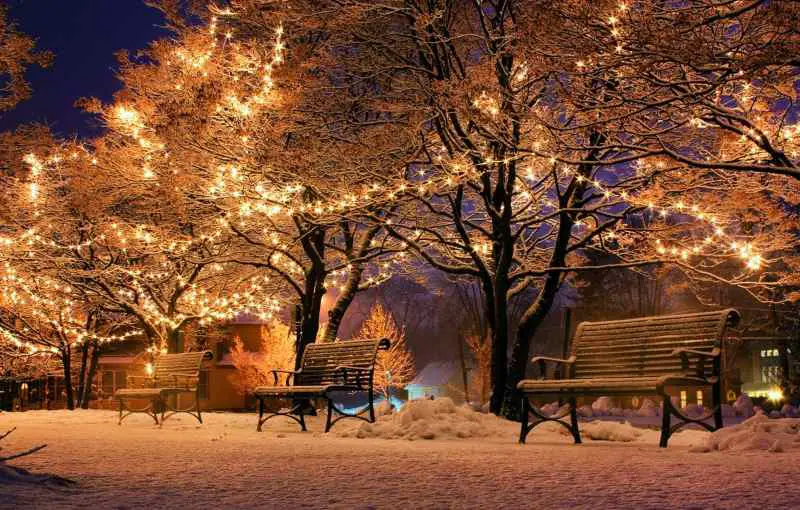
Samoan
- malamalama
— a commonly used word for light in Samoan - molī
Samoan is the official language spoken in the Samoan Islands, which is made up of the Independent State of Samoa and the American Samoa. The language is the most spoken of the Polynesian language family with a total of 510,000 speakers worldwide.
Scottish Gaelic
- aotrom
Scots Gaelic is a Goidelic language of the Celtic and Indo-European language family, native to the Gaels of Scotland. As a Goidelic language, Scottish Gaelic, like Modern Irish and Manx, developed out of Middle Irish.
Serbian
- светлости (svetlosti)
Serbian is a South Slavic language spoken mainly in Serbia, Bosnia and Herzegovina, Montenegro, Croatia and Macedonia by about 9 million people. Serbian is the official and main language of Serbia and Montenegro.
Sesotho
- kganya
Sesotho (Sotho) is a Southern Bantu language of the Sotho-Tswana group, spoken primarily by the Basotho in Lesotho, where it is the national and official language, South Africa, where it is one of the 11 official languages and in Zimbabwe where it is one of 16 official languages.
Shona
- chiedza
Shona, one of the most widely spoken Bantu languages, is the main language in Zimbabwe.
Sindhi
- روشني
Sindhi, an Indo-Aryan language, is the official language of the Pakistani province of Sindh and spoken by over 25 million Sindhi people.
Sinhala
- ආලෝකය ālōkaya
Sinhala is an Indo-Aryan language spoken by approximately 16 million Sinhalese people in Sri Lanka and is one of two official languages of Sri Lanka.
Slovak
- svetlo
— translates to light in Slovak
Slovak, the official language of Slovakia, is a West Slavic language where it is spoken by approximately 5.6 million people.
Slovenian
- svetloba
— is the Slovenian word for light
Slovenian, an Indo-European language of the South Slavic language branch is the official and national language of Slovenia spoken by less than 3 million people.
Somali
- iftiin
Somali, an Afro-Asiatic language spoken by over 16 million people, is an official language of Somalia, a national language in Djibouti, and a working language in the Somali Region of Ethiopia.
Spanish
A number of different words on how to say light in Spanish:
- luz
— this is pronounced as (leuss) - ligero
- lumínico
Spanish is the second most widely used language in the world natively spoken by more than 437 million people including Spain, most of Central and South America, Mexico, and the USA. There are over 21 countries in the world that have Spanish as their official language. It is a Romance language that originated in the Iberian Peninsula.
Sundanese
- cahayaan
Sundanese is a Malayo-Polynesian language spoken by about 39 million people mainly in western Java in Indonesia. There are also speakers in Banten, Jakarta, parts of western Central Java and southern Lampung. It is the third most-spoken language in Indonesia.
Swahili
- mwanga
— is the Swahili word for light
Swahili is a Bantu languages spoken by the Swahili communities in Kenya, Tanzania, Uganda, Rwanda, Burundi, Mozambique and the Democratic Republic of Congo.
Swedish
- ljus
— the Swedish word for light
Swedish is a North Germanic language, closely related to Norwegian and Danish spoken by around 10 million people. A descendant of Old Norse, it is the national language of Sweden and the official language of the Åland Islands.
Swiss German
- hell
Swiss German is the collective name for the great variety of Upper German dialects spoken in Switzerland, Liechtenstein, in the Austrian province of Vorarlberg, in parts of Baden-Württemberg in Germany and Alsace in France.
Tagalog Filipino
- liwanag
Tagalog is an Austronesian language spoken as a first language by a quarter of the population of the Philippines and as a second language by the majority. Its standardized form, officially named Filipino, is the national language of the Philippines, and is one of two official languages alongside English.
Tahitian
- maramarama
— is the Tahitian word for light
Tahitian belongs to the Eastern Polynesian language group, spoken mainly on the Society Islands in French Polynesia and Bora Bora.
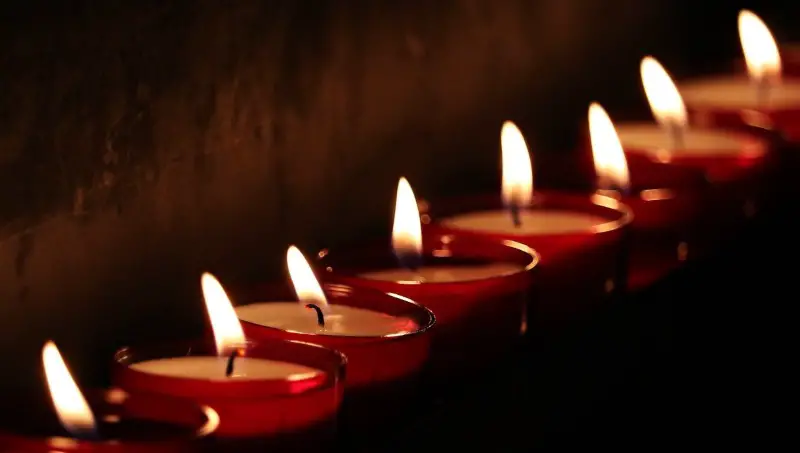
Tajik
- нур nur
Tajik is the main language of Tajikistan, closely related to Farsi and Kurdish. Since the late 1930s, it is written using a variant of the Cyrillic script.
Tamil
- ஒளி (Oḷi)
— the general term for light in Tamil.
Tamil is a Dravidian language spoken in southern India, Sri Lanka and Singapore by about 67.5 million people. It can also be heard in Mauritius and Malaysia.
Tatar
- яктылык
Tatar (татарча), the national language of the Tatars, is a Turkic language spoken mainly in the Russian republic of Tatarstan as well as Siberia by about 7 million people in Central Asia. It refers to the Volga-Kipchak Kipchak subgroup of the Turkic group of languages.
Telugu
- కాంతి (Kānti)
— is the Telugu word meaning light - సూర్యకాంతి (sūryakānti)
Telugu is a Dravidian language spoken in the Indian states of Andhra Pradesh, Telangana and the union territories of Puducherry by 75 million Telugu people.
Thai
How to say light in Thai:
- แสงสว่าง (S̄ængs̄ẁāng)
— is the Thai word for light
Thai ภาษาไทย, the sole official and national language of Thailand, spoken by 50 million people, belongs to the Tai group of the Kra–Dai language family of Southeast Asia.
Tibetan
- nyima
— This is the Tibetan word for light
Tibetan is an official language of the Tibet Autonomous Region of the People’s Republic of China. The Tibetic languages are a cluster of Tibeto-Burman languages descended from Old Tibetan, spoken across a wide area of eastern Central Asia bordering the Indian subcontinent, including the Tibetan Plateau and the Himalayas.
Tsalagi Cherokee
- e-ga-hi
Cherokee (Tsalagi) belongs to the Iroquoian language family. The Cherokee language is unique among Native American languages in that it is both a written and spoken language.
Tsonga
- Rivoningo
Tsonga is a Bantu language spoken by the Tsonga people totalling 12 million people mainly in South Africa, but also Mozambique and Eswatini.
Tswana
- lesedi
Tswana is a Bantu language spoken by about 4.4 million people in Bostwana, where it is the national and majority language, Namibia, Zimbabwe and South Africa. The majority of speakers, about 3.6 million, live in South Africa, where the language is officially recognised.
Turkish
- ışık
— the Turkish word for light
Turkish is a Turkic language believed to be of the Altaic language family spoken mainly in Turkey, Northern Cyprus, Cyprus and other countries of the former Ottoman Empire by about 88 million people.
Turkmen
- ýagtylyk
Turkmen belongs to the Turkic language family and is spoken by around 11 million Turkmen people of Central Asia, mainly in Turkmenistan, Afghanistan, and Iran.
Ukrainian
- світло (svitlo)
— the Ukranian word for light
Ukrainian is an Eastern Slavic language spoken mainly in Ukraine by about 51 million people.
Urdu
- روشنی
— means light in Urdu
Urdu is the official national language and lingua franca of Pakistan. It is a member of the Indo-Aryan group within the Indo-European family of languages and is mutually intelligible with Hindi.
Uyghur
- نۇر
Uyghur is a Turkic language of the Karluk branch written in a Uyghur Perso-Arabic script. It is spoken primarily by 10 million Uyghur people in the Xinjiang Uyghur Autonomous Region of China.
Uzbek
- yorug’lik
Uzbek is a Turkic language that is the official national language of Uzbekistan spoken by around 27 million people.
Vietnamese
How to say light in Vietnamese:
- nhẹ
- đèn
Vietnamese is an Austroasiatic language spoken mainly in Vietnam, where it is the national and official language, by about 82 million people.
Welsh
- golau
— how to say light in Welsh
Welsh is a Brittonic language of the Celtic language family spoken natively in Wales, and by some in England.
Xhosa
- ljocht
— is the Xhosa word for light
Xhosa is a Nguni Bantu language with click consonants and is one of the official languages of South Africa. It is spoken as a first language by approximately 8.2 million people and by another 11 million as a second language in South Africa, mostly in Eastern Cape Province.
Yiddish
- ליכט (likht)
Yiddish is the historical language of the Ashkenazi Jews originating during the 9th century in Central Europe. Belonging to the Indo-European language family, it is spoken by 1.5 million people.
Yoruba
- imole
- iná
Yoruba is a pluricentric language spoken in West Africa with the number of speakers estimated between 30 and 40 million. It is a language spoken principally in Nigeria and Benin, with communities in Sierra Leone, Liberia, other parts of Africa.
Zulu
- ukukhanya
— is the word for light in Zulu
Zulu is a member of the Bantu/Nguni family of languages. It is one of the official languages of South Africa spoken by about 10 million people mainly in Zululand and northern Natal in South Africa and also in Botswana, Lesotho, Malawi, Mozambique, and Eswatini.
A handful of final ways to say light in different languages below…
LIGHT in Other Languages — BONUS

American Sign Language (ASL)
How to sign light in American Sign Language:
- Take your strong hand and raise it above and to the side of your head. Take your fingers from touching together to extended outward.
The sign looks like a light is flicking on and spreading out.
American Sign Language is a complete, natural language that has the same linguistic properties as spoken languages, with grammar that differs from English, expressed by movements of the hands and face.
British Sign Language (BSL)
How to sign light in British Sign Language:
- Keep your hands together, inward facing and inline with the chest.
Then move upward and apart.
British Sign Language is a sign language used in the United Kingdom as the first or preferred language of some deaf people. The language makes use of space and involves movement of the hands, body, face, and head.
Dothraki
- shekhikh
— How to say light in Dothraki
Dothraki is a constructed fictional language spoken by the Dothraki, a nomadic people in the fictional world of George Martin’s fantasy novel series A Song of Ice and Fire and its television adaptation the Game of Thrones.
Elvish Sindarin
- calad
— How to say light in Elvish
Elvish Sindarin is one of the fictional languages created by J. R. R. Tolkien for use in his fantasy stories set in Arda, primarily in Middle-earth. Sindarin is one of the many languages spoken by the Elves, called the Eledhrim or Edhellim in Sindarin.
Espetanto
- lumo
- lanterno
Esperanto is an artificially constructed language and belongs to no linguistic family, with most of its vocabulary coming from the Romance languages. This phonetic language is the most widely spoken constructed international auxiliary language.
Klingon
- wovmoHwI’
— this is how to say light in Klingon
Klingon is a language that was made for the Klingons in the Star Trek movie. It is a constructed language, and not one that developed naturally. Only a few people can speak the Klingon language well enough to talk in it.
Minionese
- luz
Minionese spoken by the minions of the Despicable Me movie series appears to be a polyglot language which borrows words and grammatical rules from many different languages.
Na’vi
- atan
Na’vi is a constructed language, created for the fictional Na’vi, the humanoid inhabitants of the moon Pandora in the 2009 film Avatar.
LEARN THESE OTHER TRAVEL WORDS TOO!
Read this guide to say hello in different languages of the world.
Learn how to say happy birthday in different languages.
Check this guide for how to say friendship in different languages.
Or read this guide for how to say love in different languages.
Learn how to say thank you in other languages of the world.
Definitely check this guide on how to say cheers in different languages.
How about this guide to say goodbye in every language of the world.
Or read this guide to say good morning in all languages.
How about this guide on how to say beautiful in other languages.
Maybe this guide on how to say good night in other languages.
Aaaaaaaand now you know how to say light in every language of the world!
OVER TO YOU GUYS!
What is the word for light in your language? Extra points if you can speak several languages… Let me know in the comments.
If you see an error here or if your language is missing from this list, please comment and let me know!
Keep on shining <3
Rai (of Light)
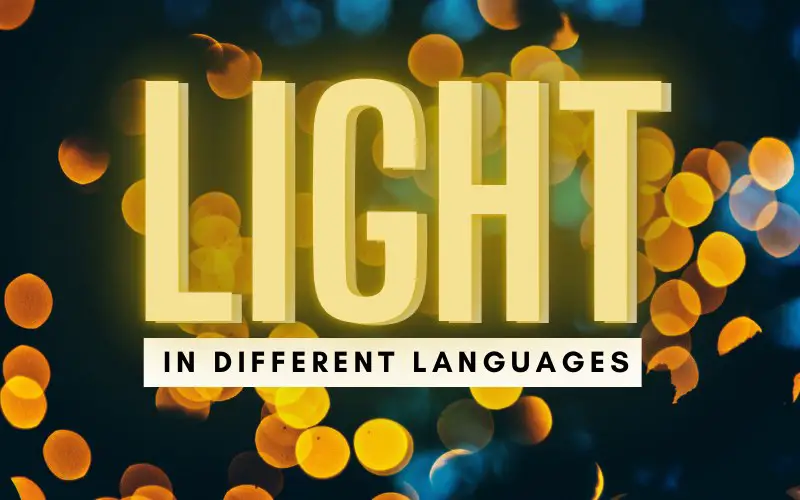
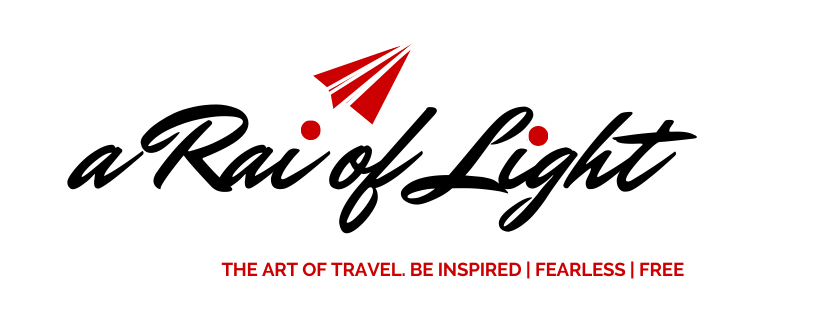
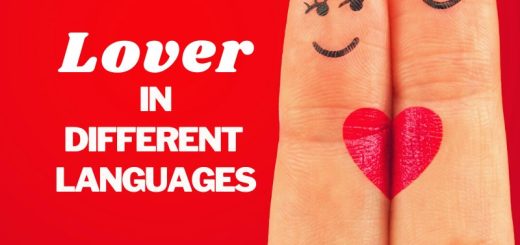

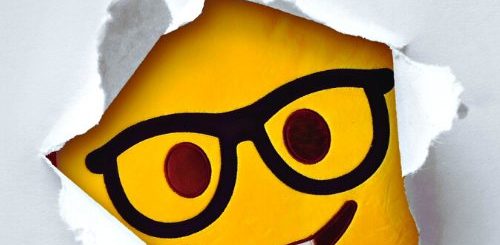
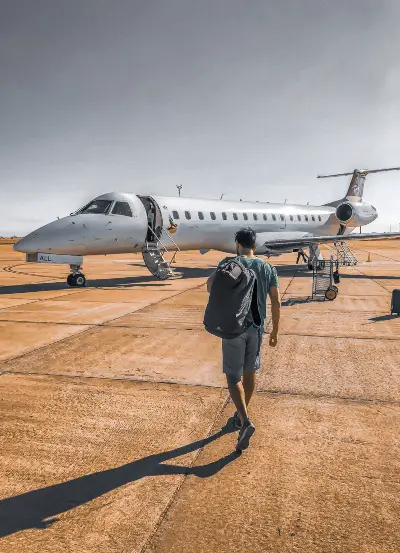 New Here?
New Here? 







